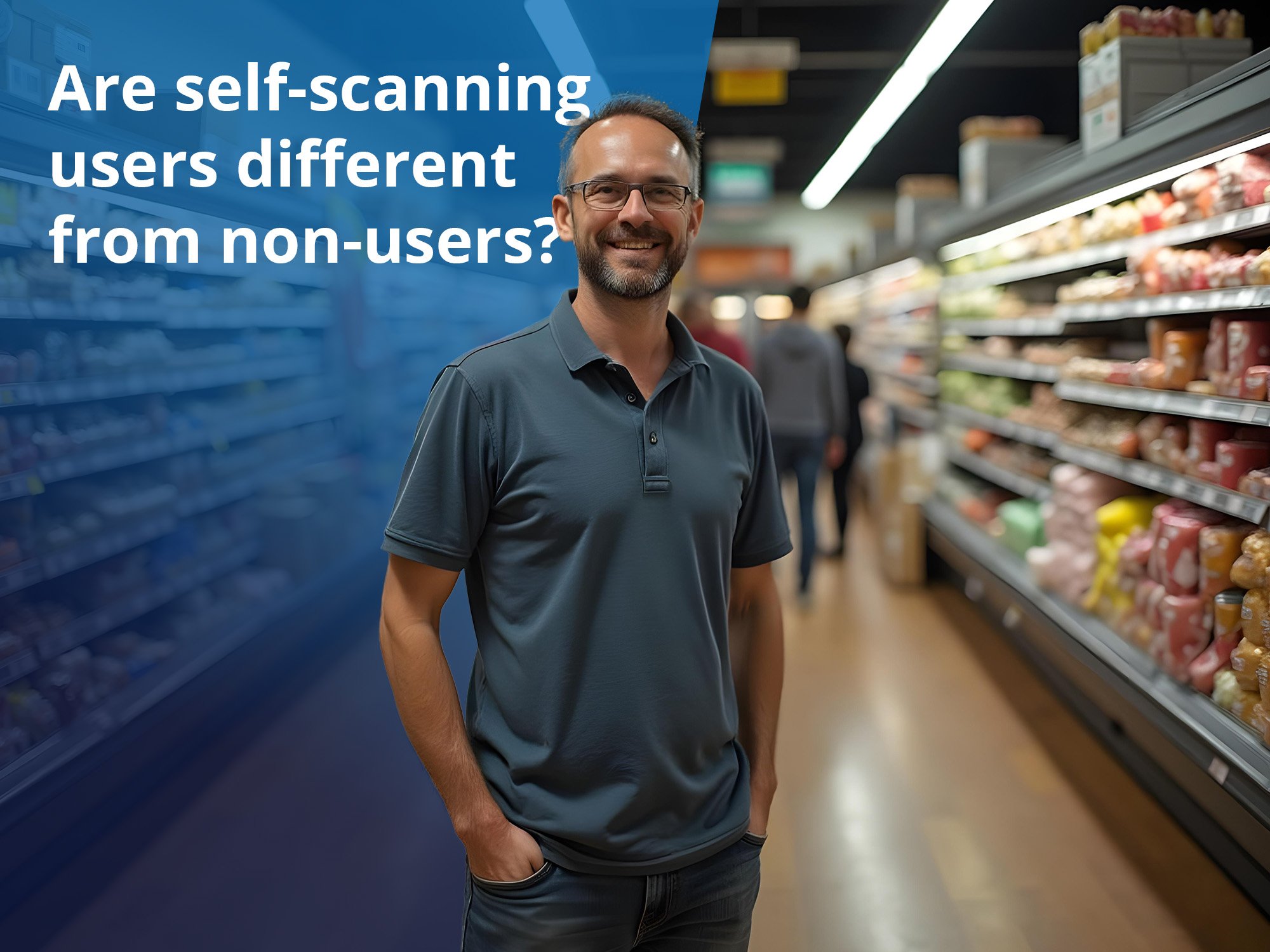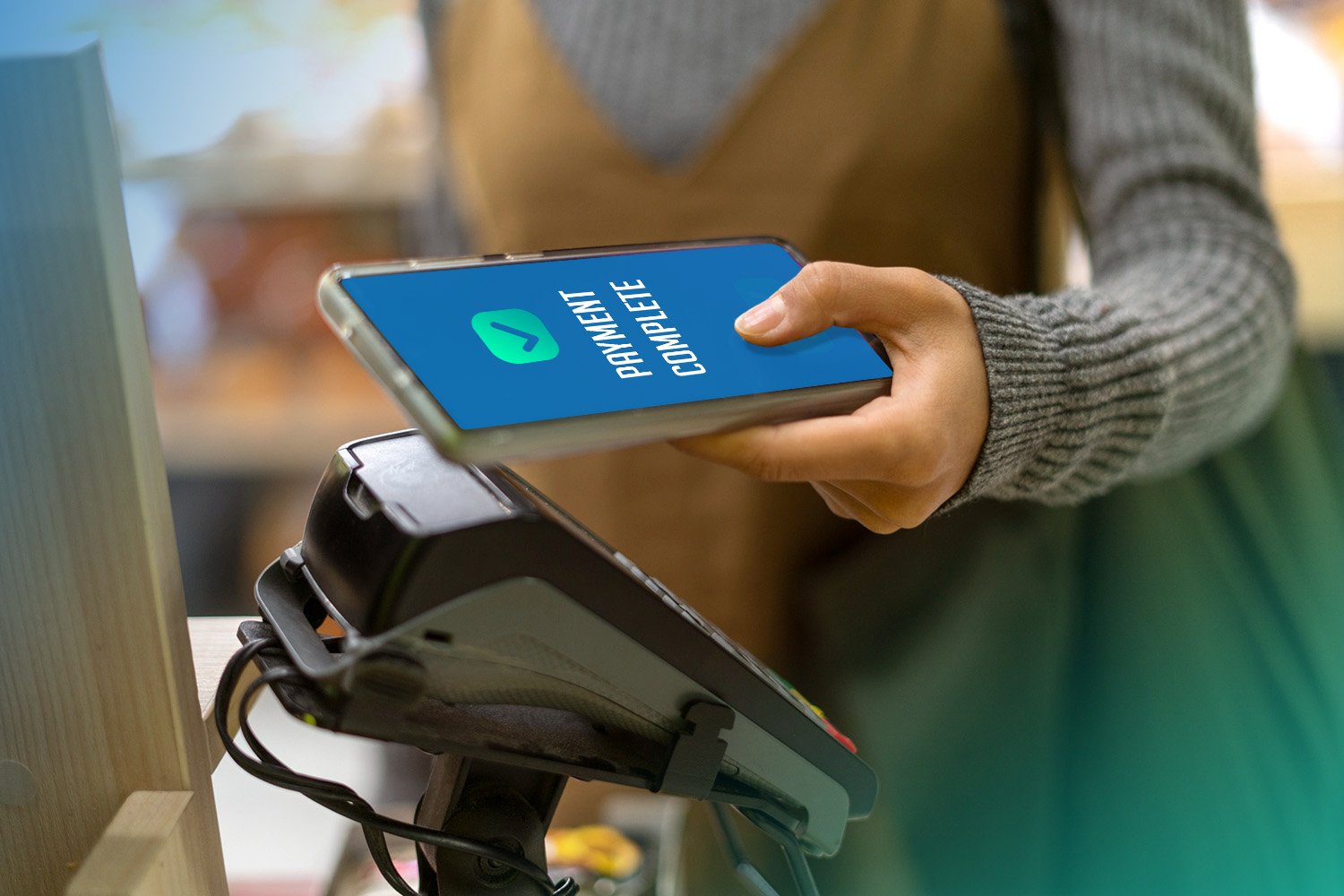A brief history of self-scanning
The handheld self-scanners have come a long way. What started as devices using black-and-white screens with limited functions, has evolved into powerful and capable devices with various features and a user-friendly interface. Nowadays, the use of touch-sceen technology and seamless wifi-connection has opened for a range of possibilities – making self-scanning even more appealing for its users.
While self-scanning technology has been around for a while, this AI-generated image does not provide an accurate description
Self-scanning has been a possibility for almost 30 years. However, for various reasons the willingness to implement and utilise this technology has not been very high until quite recently. This mainly has to do with technology itself – such as slow internet connection and limited functionalities. But also the absence of generally accepted standards and practices has historically made self-scanning implementation a complex task.
As more retailers on the market has decided to implement self-scanning, combined with technological maturity and a more optimistic view toward autonomous shopping in general, the self-scanning usage has eventually flourished. But where did it all begin? That depends on who you ask, however the launch of portable self-scanning devices happened sometimes during the late 90s. Here we will go through some of the devices that has been launched since then.
Symbol
One of the first barcode scanners created for supermarket shoppers was launched by Symbol Technologies in 1999. This device had the measurements of 77 x 215 x 70 millimetres and was marketed as a way to “revolutionise the way you shop”.
While the technological capabilities compared to today’s self-scanning devices were quite limited, for example using wifi was not an option, it was possible for shoppers to see the number of scanned items, as well as the total spend during the shopping trip.
Symbol Technologies, which is now a subsidiary of Zebra Technologies, were quick to realise the opportunities with self-scanning. According to an article from 1994, “Symbol believes that self-scanning will eliminate the sweethearting element of shopping”. And while it might have taken longer than anticipated, self-scanning has never been more popular than now.
Symbol MC16
As time progressed, so did the technological advancements. The MC16, also known as Asterix 3 and CST3040, from Symbol Technologies was created with the end-consumer in mind, more so than before. Several prototypes were created, as the manufacturer tested everything from ergonomics, screen size and grip. This device set a standard for the devices to follow, thanks to the extensive consumer research it was possible to determine what device design that shoppers preferred to use.
This design development was not only implemented on the self-scanning device itself, but for the supporting infrastructure as well, such as the cradle where the self-scanning device is collected from and returned to.
It is important to note that not only the shoppers’ preferences needed to be accounted for – also the retailers’ opinions were necessary to create a PSS that would actually be used. Factors such as floor space and easy installation were important from a retailer perspective.
In case you are curious to know more about the process behind this specific and iconic self-scanning device – check out this collection of images and fun facts by Jorg Schlieffers.
Motorola MC17
Another memorable self-scanning device is the Motorola MC17.
This device was launched in the 2000’s, and this product description shows how far the technology had advanced: “The Motorola MC17 gives retailers a unique opportunity to strengthen the customer relationship, delivering highly effective promotions targeted to each individual's buying habits and preferences.”
With colour-screen and intuitive interface, the Motorola MC17 was labelled a mobile computer, and its various features were tailored for a more personal shopping experience. In total, the MC17 was a success and installed in about 2000 stores, with 1 million transactions. It was re-launched in upgraded versions, such as the MC17T with a touch screen, until it was discontinued and eventually replaced with Zebra PS20.
Symbol MC18
When Symbol launched the MC18, it was seen as a modern smartphone with custom software, due to its impressive technical specifications. This made it possible to enhance the customer experience even further, here are some of the features made possible with the MC18:
Check prices
Locate items
Find complementary products
Provide personal recommendations
1D and 2D bar code scanning
Also the battery was improved for this device, meaning that retailers did not have to purchase as many devices as before – since each device had a longer service time.
The ergonomics for this self-scanning device had been redesigned, in order to encourage shoppers to use both the touch-screen and the trigger button. Also the cradle had been re-designed, which saved space in the store.
Zebra PS20
The PS20 from Zebra Technology was launched in 2019, with PS20 and PS20 Plus in the series, and is still considered one of the most advanced devices for self-scanning.
Zebra describes the PS20 device benefits for the shoppers as “the ultimate personalised shopping experience in the palm of their hands.”. Due to the advanced hardware, there are many possibilities in terms of customization for retailers – for example showing in-store discounts, adding CRM-systems or edit basket value.
The PS20 features are not only targeted towards the shoppers, but also towards the store associates, as the device is equipped with both a camera and microphone, for instant help. However, whether or not these features have been fully utilized is unknown.
The future of self-scanning devices
Looking back, one can see how the development of self-scanning devices has progressed – with the end-users in mind. Both hardware and software has been continuously developed in order to fit the shoppers’ needs, and the development is still ongoing. But what does the future entail?
“I believe that the self-scanning devices will continue to evolve according to emerging customer needs. As of now BYOD self-scanning, meaning that shoppers are scanning using their own smartphones, is rising in popularity. However, I believe that there are still many benefits using dedicated self-scanning devices, and that they will remain popular in the future.”, says Fredrik Englund, Managing Director at Datema Retail.
Several parties are discussing the future of self-scanning, self-checkout and other retail technology solutions. With new emerging technology and research, such as artificial intelligence, augmented reality and more access to high-speed internet, the future for self-scanning is bright yet unknown.









